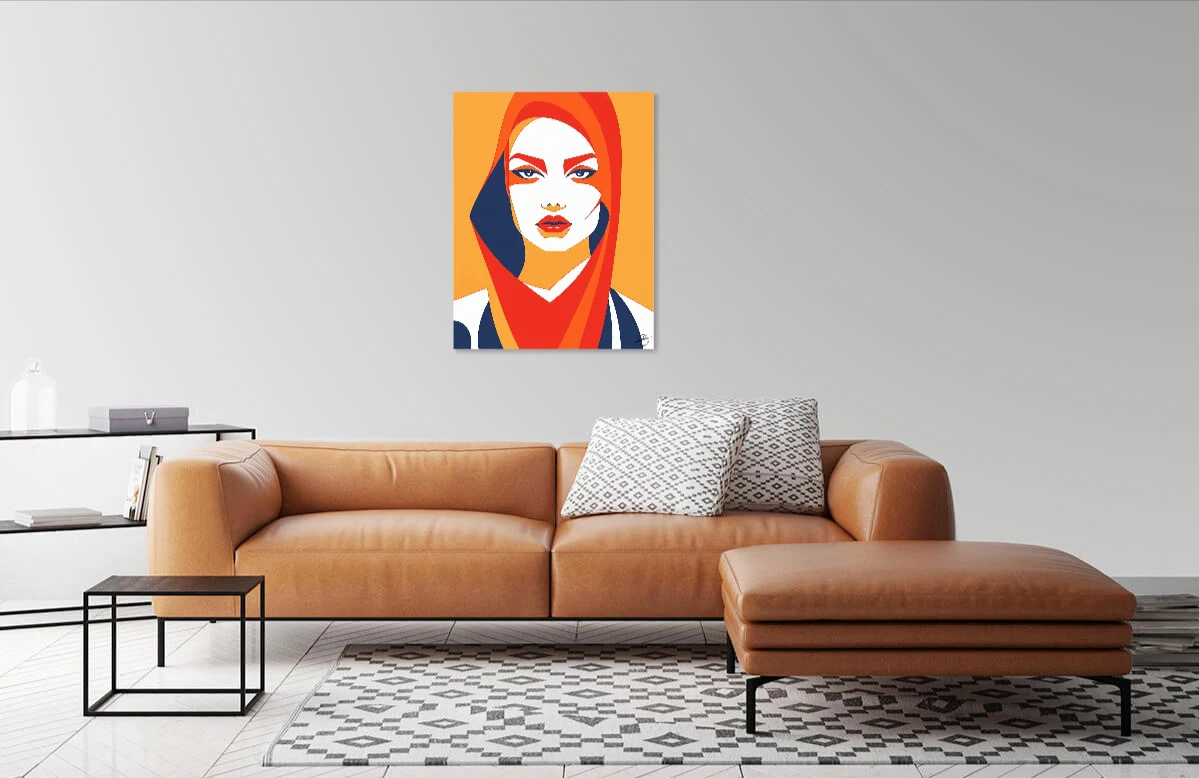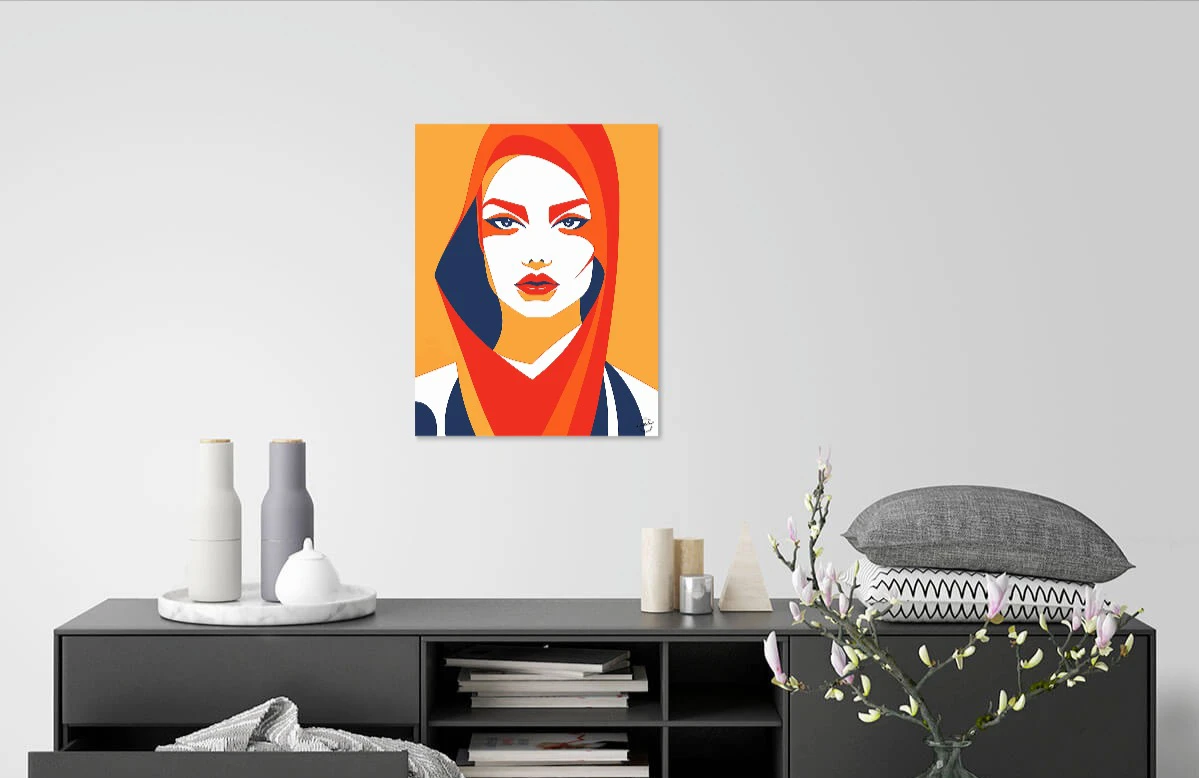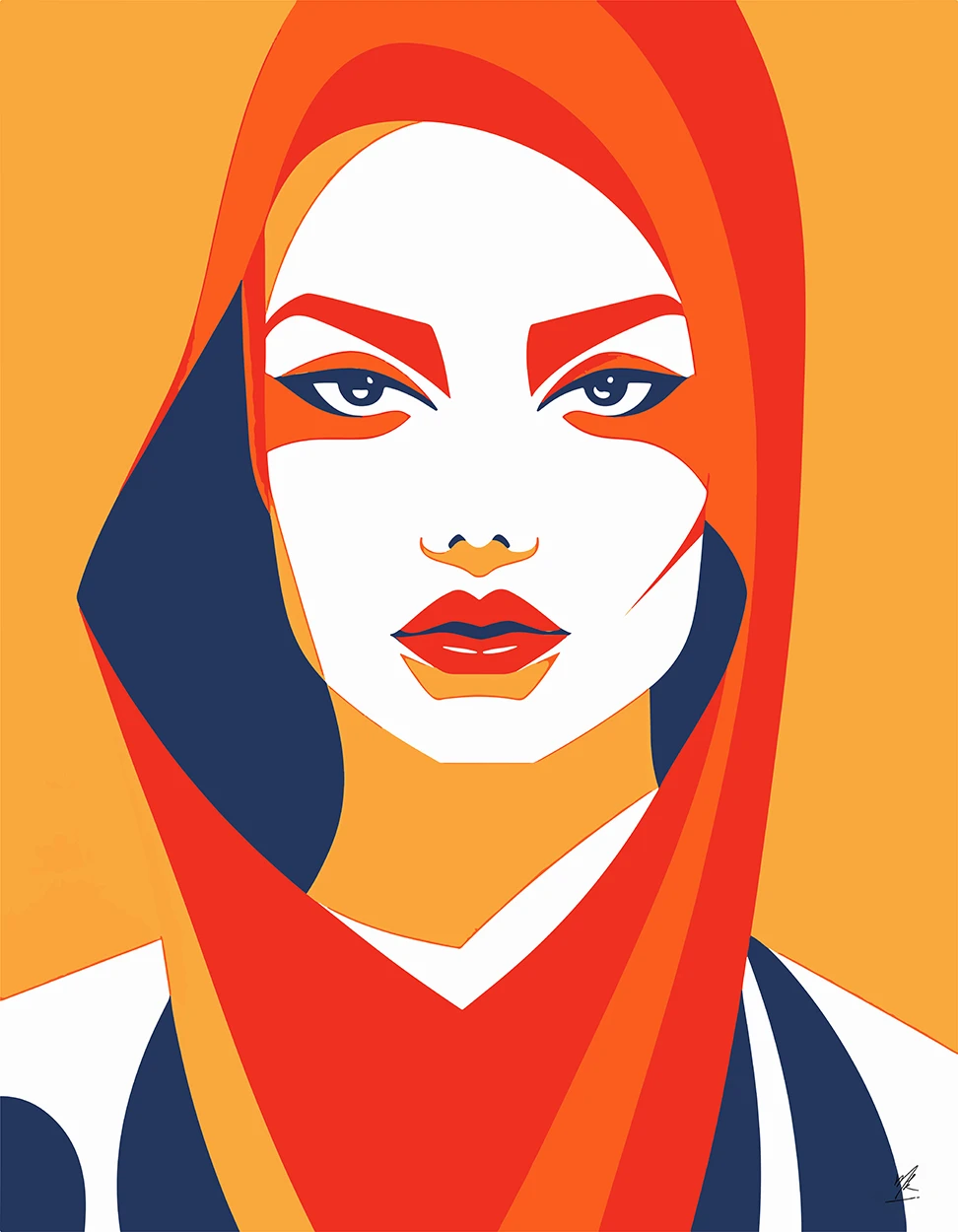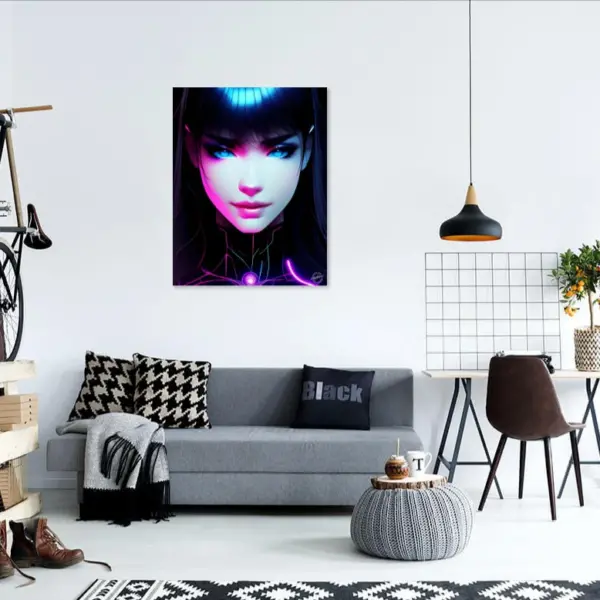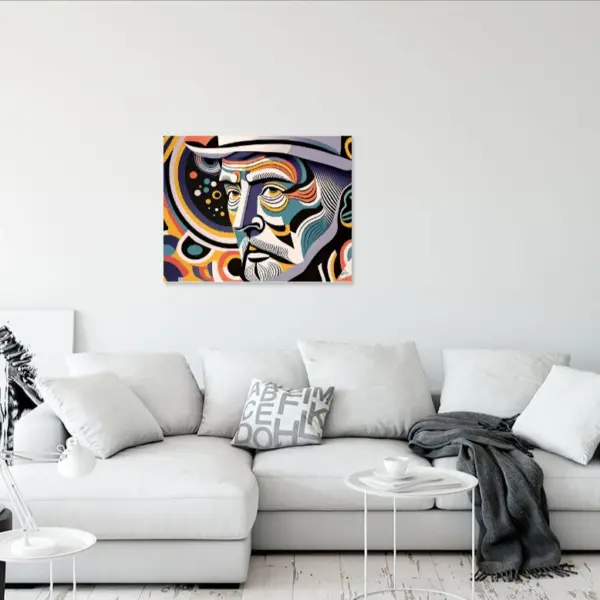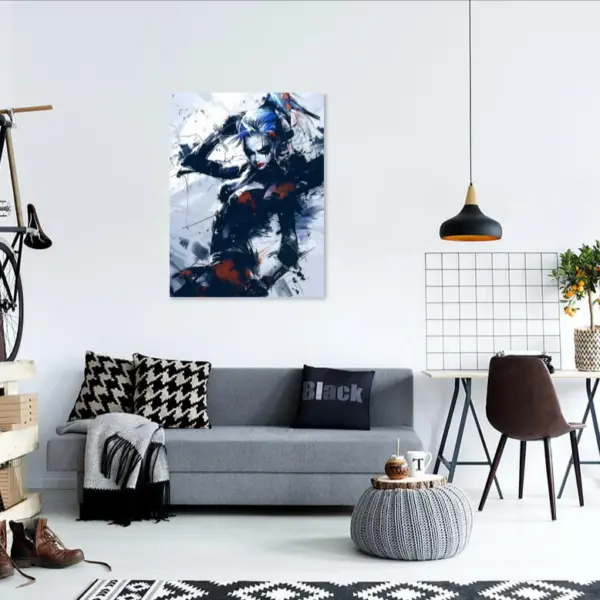Zahara
At first glance, the face of Zahara dominates the composition, compelling us to meet her unwavering gaze. Her eyes are deep and intense, outlined with sharp, angular forms that are reminiscent of warrior markings, drawing us in and holding our attention with an almost hypnotic quality. The precision with which the lines around her eyes are drawn suggests control, clarity of purpose. This is not a passive face; it is a face that commands space, that asserts itself unapologetically. Her gaze, direct and unyielding, seems to challenge the viewer, demanding recognition not only of her presence but of the power she embodies.
The color palette is arresting—an intentional use of vibrant orange, red, and deep navy, each shade working in harmony to tell a deeper story. The oranges and reds feel warm, even fiery, evoking the image of a sunset or the glow of embers, suggesting an internal flame, a passion that simmers beneath the surface of Zahara’s composed exterior. These fiery colors suggest life, strength, and intensity. In contrast, the navy blue introduces a cooler, more grounded element, as if to say that even in her passion, Zahara is rooted in something deeper—a calm self-assurance. The choice of these contrasting colors, interwoven so seamlessly, speaks to a duality within her. She is both the fire and the calm, both the sun and the night.
The structural elements of Zahara’s face are simplified into geometric shapes, but there’s nothing simplistic about their arrangement. The minimalism of the form contrasts with the complexity of the expression the piece evokes. Her lips, painted in a red so bold that it stands out even amid the surrounding vibrancy, are slightly parted, yet remain unreadable. There’s a quiet mystery to them, a suggestion that Zahara holds her thoughts close, revealing nothing beyond what she chooses to. The sharpness of her jawline and the contours of her cheeks, though abstract, convey strength—both physical and emotional. These geometric choices emphasize that this is not a portrait of a singular person, but rather a representation of an archetype, a symbol of feminine strength, resilience, and perhaps, rebellion.
The headscarf that Zahara wears seems to flow organically from her, its folds and layers woven into the fabric of the background itself. It’s as if Zahara and her surroundings are one, blending and yet distinct. The headscarf, rendered in bold lines of red, orange, and navy, extends beyond her head, merging with the space around her, suggesting that Zahara is more than just a person—she is an idea, a force that transcends the confines of her physical form. The scarf, often associated with tradition and modesty, is transformed here into a statement of defiance and independence. It does not obscure her features; rather, it frames them, highlighting her individuality and self-possession.
One of the most striking elements of this artwork is how it plays with negative space. The background, a simple yet powerful wash of golden yellow, provides the perfect contrast to the bold colors of Zahara’s face and scarf. The minimalism of the background allows the viewer to focus entirely on the figure, enhancing the intensity of her presence. The use of negative space here is not just a compositional choice but a symbolic one—Zahara exists in a void, without distraction or adornment, as if to say that she needs nothing external to define her. She is whole and complete within herself.
There is a sense of timelessness in this piece. Zahara could exist in any era, in any place. She represents not just a woman, but womankind. Her sharp features, angular and unyielding, are reminiscent of modernist movements, but there’s also something ancient about her—a hint of the goddesses and queens of old, figures who held power and commanded respect. In this way, the artwork bridges the past and the present, reminding us that the struggles and strengths of women are eternal, unbound by time or culture.
Zahara’s story is not immediately obvious, but that is the beauty of the work. The viewer is invited to interpret, to project their own understanding of who Zahara is and what she represents. Perhaps she is a warrior, preparing for battle; perhaps she is a leader, gazing out over her people; perhaps she is simply a woman, unapologetically herself, in all her complexity. Whatever interpretation one chooses, the message is clear: Zahara is not to be ignored. She demands to be seen, to be recognized, and to be understood on her own terms.
In conclusion, “Zahara” is a powerful meditation on identity, strength, and duality. Through its bold use of color, form, and abstraction, the artwork speaks to the resilience and complexity of women, inviting the viewer to reflect on what it means to be both strong and vulnerable, both seen and unseen. Zahara is a force of nature, a figure who transcends the canvas and lingers in the mind long after the viewer has looked away. This piece reminds us that true power lies not in what is said, but in what is felt, in the silent yet undeniable presence of a soul unafraid to be itself.

